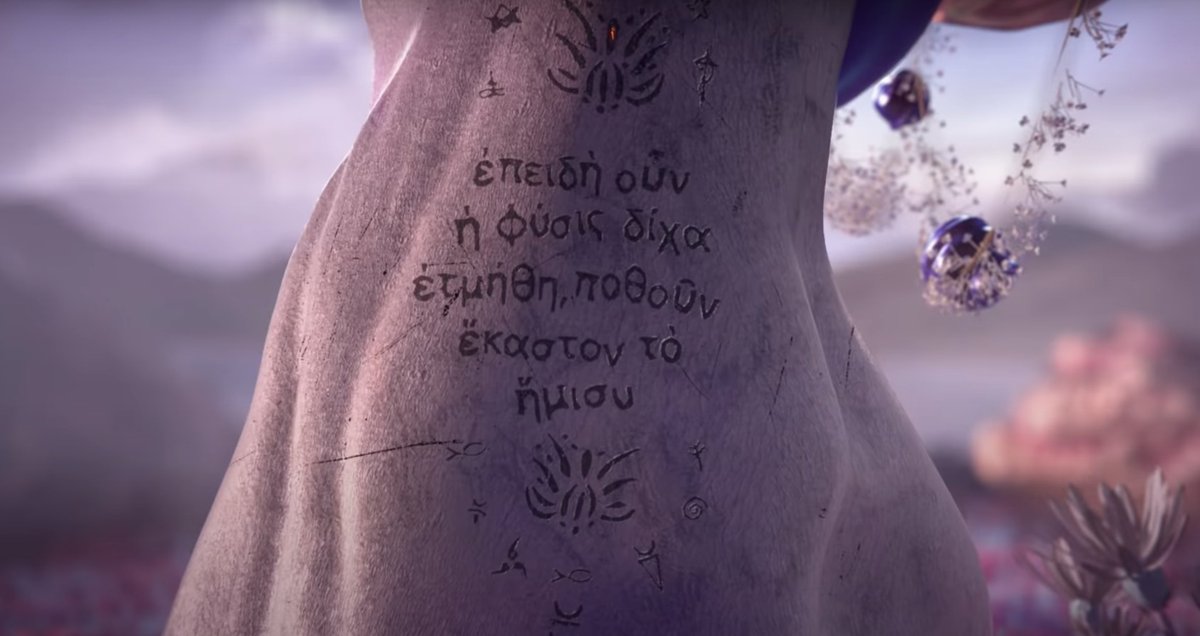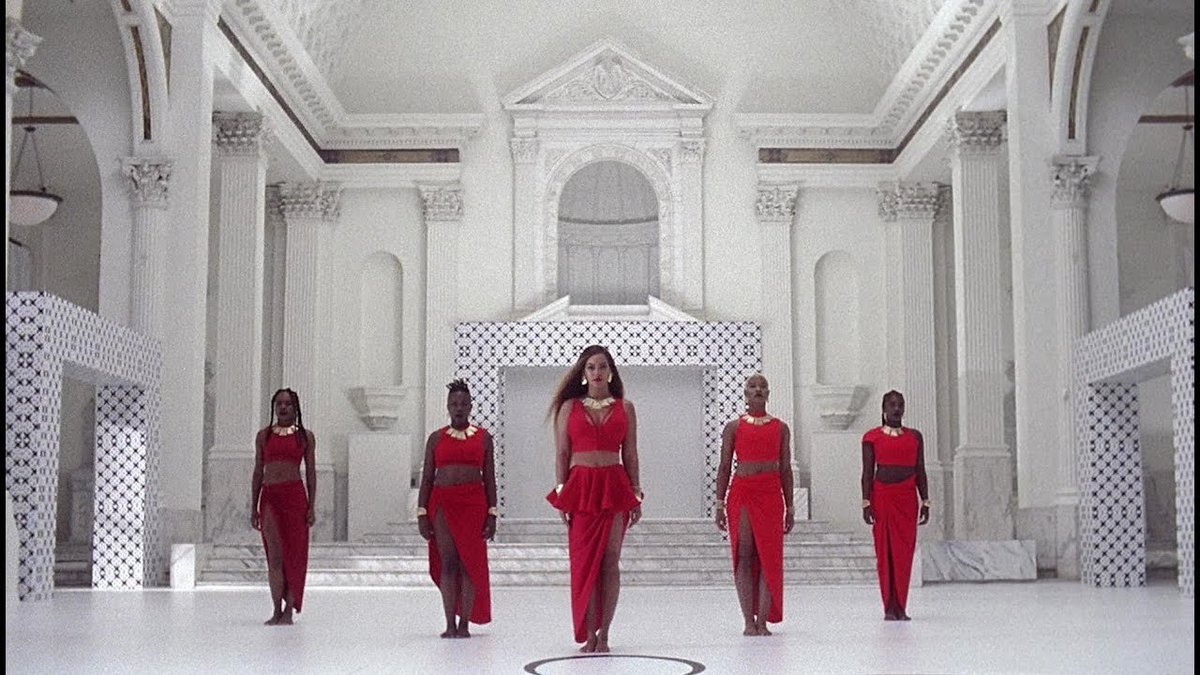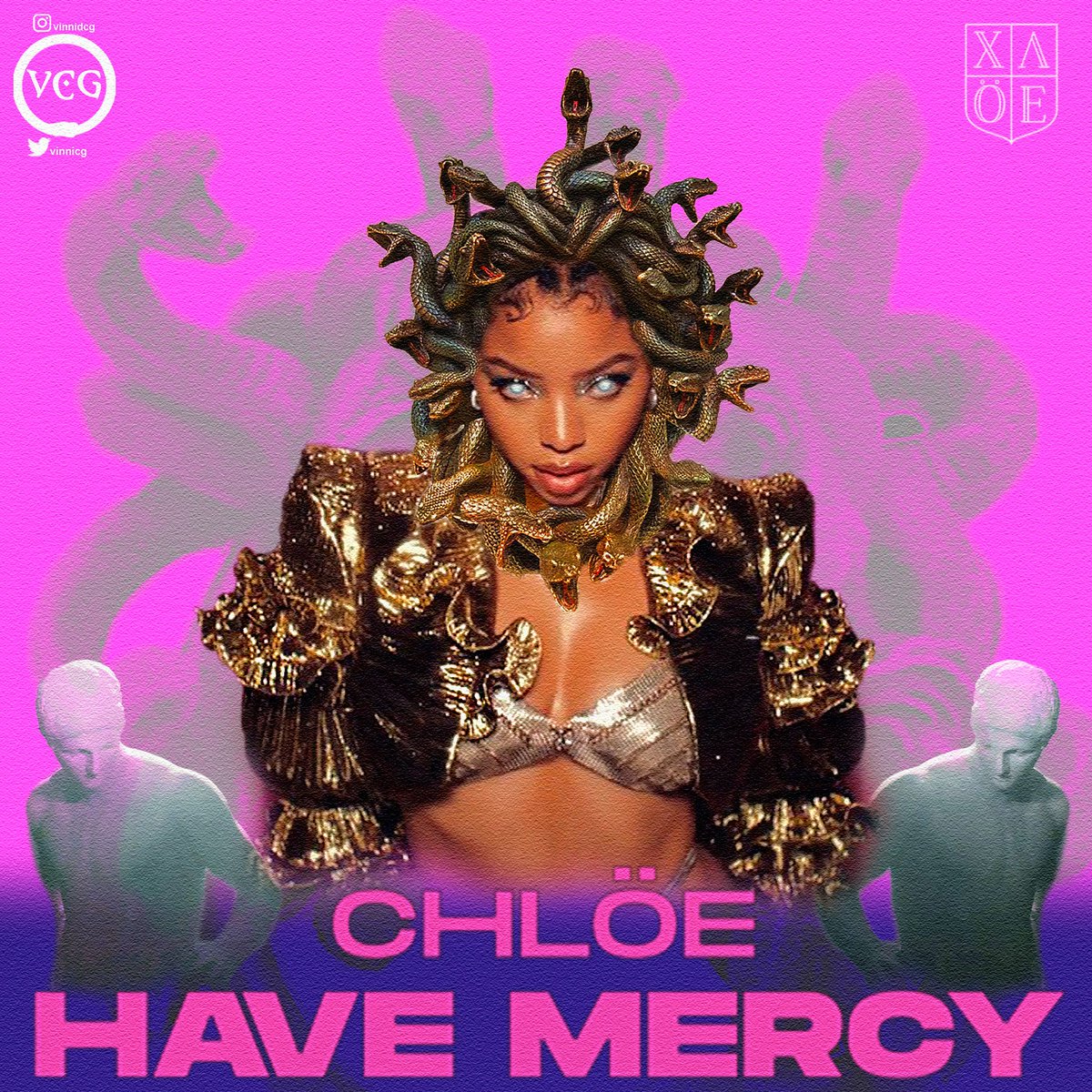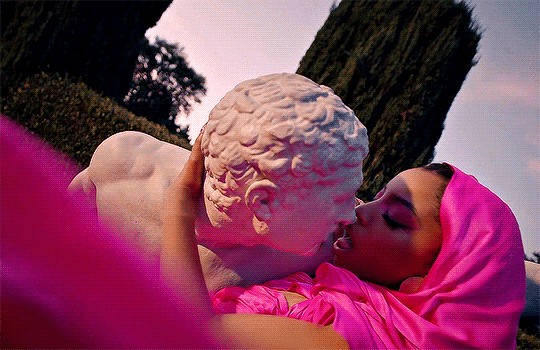BLACK POP STARS AND CLASSICAL ICONOGRAPHY
Ѱ here, I would like to take a moment to acknowledge how much Black classicisms in the visual arts we've gotten this year through the music videos of Black pop stars. Chlöe's newest video continues in a tradition of videos styled…
Ѱ here, I would like to take a moment to acknowledge how much Black classicisms in the visual arts we've gotten this year through the music videos of Black pop stars. Chlöe's newest video continues in a tradition of videos styled…
...this year in terms of different classical myths, stories, and icons. Kicking off the year back in February, @FKAtwigs released "Don't Judge Me", choreographing bodies around Kara Walker's "Fons Americana". In April came @LilNasX's "MONTERO (Call Me By Your Name)"... 



...which played around with Aristophanes' speech in Plato's "Symposium". In June, we had @DojaCat and @theweeknd's "You Right" which was a love song exploring an illicit relationship through metaphors of their classical zodiac signs (Libra and Aquarius, respectively). 



And this August, @lizzo released "Rumors" with @iamcardib, exploring different forms of classical art & referencing the Disney interpretation of the Muses from "Hercules". So Chlöe's "Have Mercy" is continuing this 2021 trend of ancient classicisms popping up in music videos. 

CLASSICAL MENTORSHIP RE: PARKWOOD
Chlöe is an artist under Parkwood, an American management and entertainment company founded by @Beyonce in 2010. Beyoncé (as well as her husband, Jay-Z) frequently use classical statues in their music videos and performances.

Chlöe is an artist under Parkwood, an American management and entertainment company founded by @Beyonce in 2010. Beyoncé (as well as her husband, Jay-Z) frequently use classical statues in their music videos and performances.


Beyoncé notably choreographs her body around classical statues and architecture to make figural comparisons (see especially "Get Me Bodied", "Jealous", "APESHIT", and "POWER"). 



In Chlöe's solo debut, she continues in the tradition of her mentor but adds her own subversion--she positions herself as Medusa, and so instead of making comparisons between her body and classical statues, she's instead expressing the power her body has over the flesh of others. 

THE GAZE IN THE MAZE
Chlöe's video begins with a news report that a 21-year old man has gone missing and we are told that the events of the video are what transpired with him a week ago. The video is set at an HBCU-inspired fraternity/sorority bearing her own name in Greek:
Chlöe's video begins with a news report that a 21-year old man has gone missing and we are told that the events of the video are what transpired with him a week ago. The video is set at an HBCU-inspired fraternity/sorority bearing her own name in Greek:

The melding of HBCUs Greek system with further classical iconography is another trademark of Chlöe's mentor, see the @netflix "HOMECOMING" documentary about Beyoncé's HBCU Homecoming-inspired 2017 Coachella performance for further details. 

This is highlighted by Beyoncé's mother, Tina Knowles-Lawson, having a brief cameo in "Have Mercy"--she watches the young men entering Chlöe's house from her rearview mirror and with binoculars, as an aspect of the female gaze which gets explored throughout the video. 

The video is full of seductive choreography that draws the men further into the trap of Chlöe and her gorgonic gals--by the end of the video our victim, Cameron James, follows Chlöe into a hedge maze where he is turned to stone.
https://twitter.com/postclassics/status/1436361907959521288?s=20
Speaking as someone who's been a fan of Chlöe and her sister's music, and so who witnessed a lot of the backlash she received this past year over expressing her sexuality and her body, I'm glad that Medusa is a figure she's decided to emulate to clap back at a lot of the haters. 

HAIR ICONOGRAPHY - BLACK HAIRSTYLES AND GORGONS
So I personally appreciate this video because it actually ties into a lot of my own research around Black and classical myth studies (esp hair & music) because of what aspects of Medusa are being focused on. (image cred @vinnicg)
So I personally appreciate this video because it actually ties into a lot of my own research around Black and classical myth studies (esp hair & music) because of what aspects of Medusa are being focused on. (image cred @vinnicg)

Chlöe has been sharing quite a bit of fanart through her social media of fans drawing her dreadlocks into snakes, not to mention how her locks were incorporated into the choreography at the end. There's a great deal around Medusa and embodiment that's being explored here… 





...which excites me because it gives an interpretation of Medusa that I as a mythologist actually have to work to produce scholarship about /precisely/ because it lies outside of the mid-20th century frameworks around myth that classical studies desperately needs to update.
For an example of such scholarship, see Vernant's "In the Mirror of Medusa":
drive.google.com/file/d/1lPTHZS…
drive.google.com/file/d/1lPTHZS…
(and for a more contemporary look back at Medusa other than the Medusa Reader, see Caroline van Eck's "The Petrifying Gaze of Medusa: Ambivalence, Ekplexis, and the Sublime":)
jhna.org/wp-content/upl…
jhna.org/wp-content/upl…
Furthermore, gorgons have some interesting connotations re: musicality and genre in ancient soundscapes--bear in mind the gorgonic goddess of madness Lyssa in Euripides' "Herakles" who drives the titular hero to madness at Hera's behest and makes him kill his own family.
Lyssa says (871) "τάχα σ᾽ ἐγὼ μᾶλλον χορεύσω καὶ καταυλήσω φόβῳ." (soon I will rouse you to wilder dancing and hiss-a-note of fear into you) - καταυλήσω being a verb most commonly associated with the aulos, the primary instrument of Greek tragedy.
There is an aspect of bodily control when it comes to the gorgons--from the powers of frenzied madness and mania that Lyssa can embody and inspire, to the petrification of Medusa's stone victims. Chloe plays slyly between the two by having her conquest sing the hook of her song: 



In conclusion, I'm very excited to see whether this gorgon motif is a one-stop for Chloe Bailey or if she wishes to pursue it further in her solo pop career (and with her little sister playing Ariel in Disney's "The Little Mermaid", might we start getting siren motifs as well?). 



And given that this is the fourth video this year (not to mention other videos in similar veins--such as FKA twigs' "Cellophane" which shares sequences with "Montero" and @Normani's "Wild Side" which plays with her being a Gemini similar to the zodiac-play in "You Right")... 



...Ship of Theses might be doing a much longer write-up/look back by the end of the year at the ways in which classics has been a lens that musicians have been using more and more in their videos.
And I look forward to see what Chlöe turns out for her @vmas performance tonight!
And I look forward to see what Chlöe turns out for her @vmas performance tonight!
@threadreaderapp unroll
• • •
Missing some Tweet in this thread? You can try to
force a refresh





















